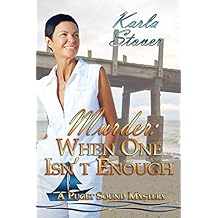
It's been a spectacularly hot and sunny summer here in Ontario and I've been fortunate to spend much of it on my sailboat, Escape Route II, cruising Georgian Bay and the North Channel. It's been said that the North Channel is the Number One destination in the world for boating/sailing. Yes, it beats the Caribbean and Mediterranean for best cruising spots.
I can attest to the fact that the water is the clearest and cleanest of all the places I've sailed (including the Caribbean). The same applies to the scenery. Rock cliffs, boulders of every size and shape, quartz covered mountains, calm waters and savage, storm-wracked waves keep the views ever-changing. Me and my partner Ian spent a month sailing from Midland, Ontario (the southern point of Georgian Bay), up to Beausoleil Island, Hopewell Bay, Parry Sound, The Bad River (where you'll find the Devil's Door Rapids I write about in my book, Darkness Descends), Killarney, Little Current (which it's not), the Benjamin Islands, Wingfield Basin and Christian Island. We anchored 29 of 31 nights.
Ian has such a great sense of humour and is a superb captain. Being in such close quarters for a month can be trying for some couples, but not for us. Below is one example of how every day is an adventure with Captain Ian.
 |
| When I asked for more cream cheese |
If you like to see pics of nature and the beauty around us, including native animals and birds, and believe that vacation pics are not punishment (as per Betty White), check out my photos below. You'll see from the scenery that many parts of Georgian Bay and the North Channel are still wild and untamed.
 |
| A curious porcupine near Parry Sound, Ontario |
 |
| A pileated woodpecker at Kilcoursie Bay, near Parry Sound |
 |
| A pair of loons and their babies, north of Beausoleil Island |
 |
| Cell Tower - they should all be made like this (outside the Shawanaga Inlet) |
 |
Granite cliffs are the backdrop to the
Escape Route II at anchor, The Bad River
|
 |
| Part of the Devil's Door Rapids at the Bad River |
 |
| Mountains surrounding Baie Fine, North Channel |
 |
| Beavers at dinner, Covered Portage Cove near Killarney |
 |
| Executive beaver lodgings |
 |
| Overlooking The Pool anchorage, North Channel. |
 |
| Me and Topaz Lake |
 |
| Storm threatens at the Benjamin Islands, North Channel |
 |
| The Screaming Tree (not The Scream by Edvard Munch) at Covered Portage Cove |
 |
| Anchored at The Cove |
 |
| My 27" pike - was a yummy dinner! |
 |
| Morning mist over the mountains of Killarney, Ontario |
 |
Navigating waves and the 40 knot winds.
When you're sailing, every day is 'bad hair' day :)
|
 |
Georgian Bay waves at
Wingfield Basin near the tip of the Bruce Peninsula
|
 |
Remnants of the Gargantua,
a barge built in 1923 and sunk in 1952 in Wingfield Basin
|
 |
The Gargantua in 1923
|

J.C. Kavanagh
The Twisted Climb, voted BEST Young Adult Book 2016, P&E Readers' Poll
AND
The Twisted Climb - Darkness Descends (Book 2)
Novels for teens, young adults and adults young at heart
Email: author.j.c.kavanagh@gmail.com
www.facebook.com/J.C.Kavanagh
www.amazon.com/author/jckavanagh
Twitter @JCKavanagh1 (Author J.C. Kavanagh)

















































